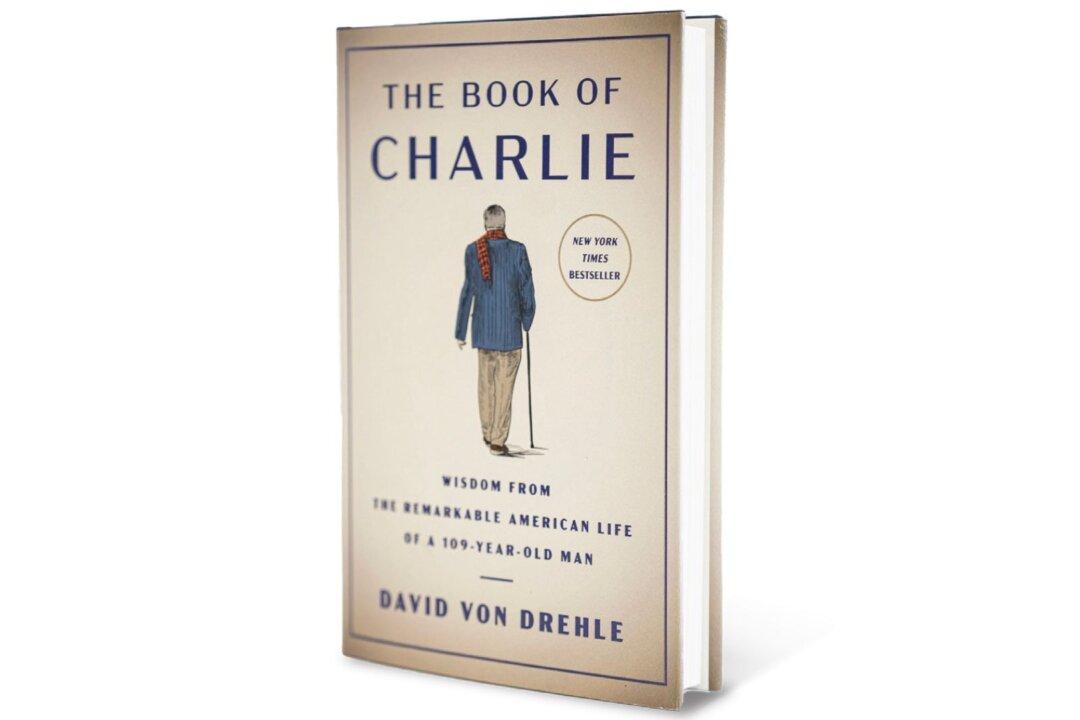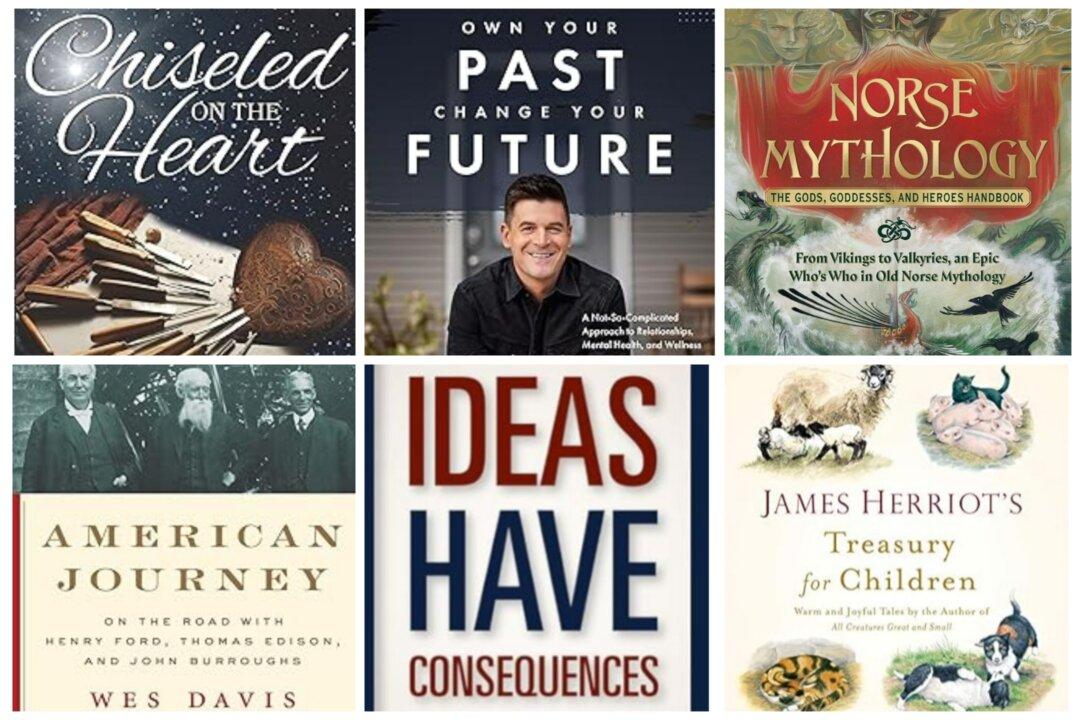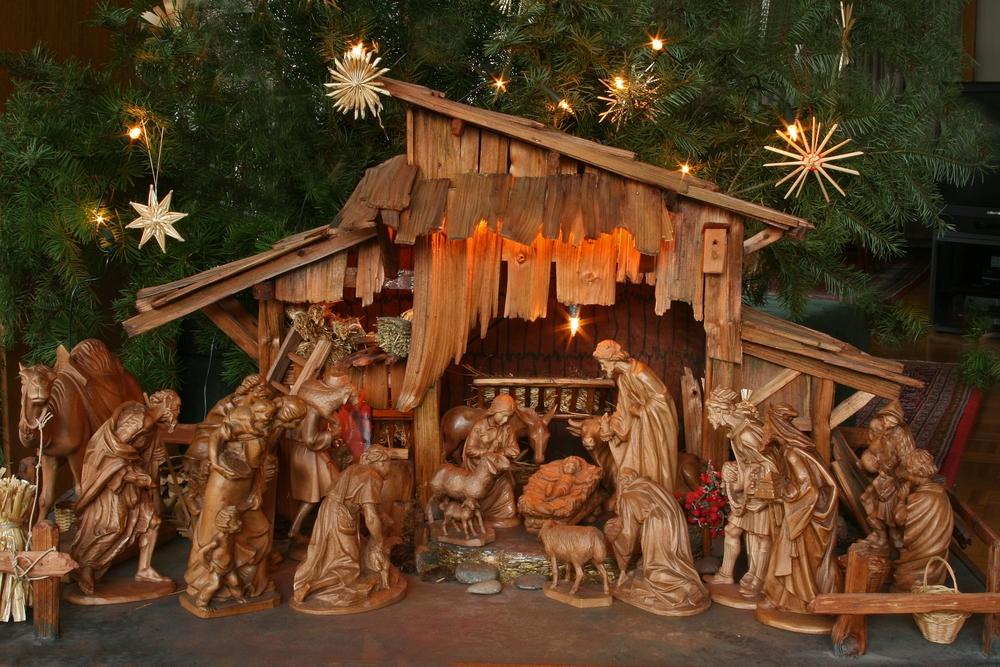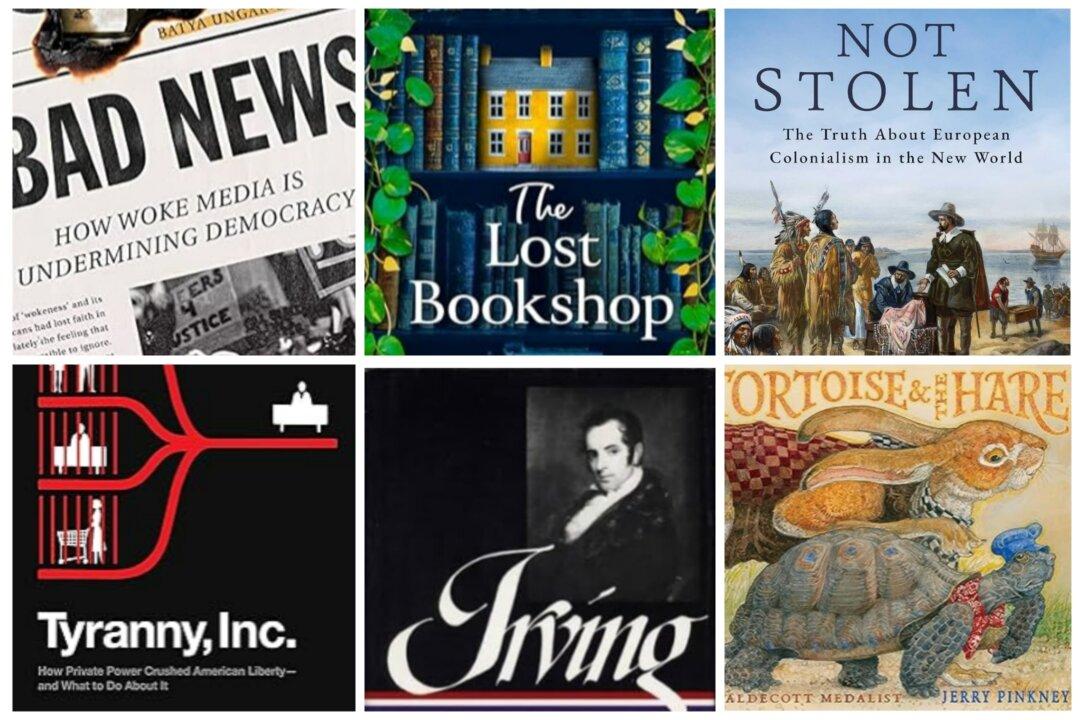When my son Douglas was very young, one of our bonding rituals was reading. He learned to read at an early age but always enjoyed curling up next to me or having me read to him by the side of the bed as he gazed toward the ceiling in rapt attention.
When he was about 10, we decided to tackle Herman Melville’s “Moby Dick.” Admittedly, we were going along fine with Captain Ahab and his quixotic quest for the great whale but got stuck when Melville threw in detailed descriptions of whale biology.
What enhanced our reading sessions was the book itself, an old, thick, volume printed in 1930 by Random House.
The pages are a vintage cream hue and filled with deep ebony-colored illustrations by Rockwell Kent. They look like etchings or block prints. They appear often enough throughout the elegant text—Monotype Fournier—to add some visual context to the classic story.
Sadly, the spine covering is torn and hangs limply. The silver stamped black cloth over board cover is faded and very tired.
The book belonged to my mother Aurora, Douglas’s grandmother, and was a gift to her in 1931.
This volume, so wrapped in soft and warm memories, has moved from shelf to shelf over the years.
What it needs is a refresh, a renewal in book body and spirit, a reinvention of its former glory—basically to be held without the fear of literally falling apart in your hands.
Our volume of “Moby Dick” is not alone. There are family Bibles, old cookbooks, personal journals, and countless other books that scream out for the tender attention that only skilled bookbinders can offer.
Their talents are finely honed and honored. They are traditional and elegant craftsmen to be treasured, their skill set to be revered and preserved.

Spirit of Tradition
It’s a setting where you might expect to see Harry Potter come out from the woods. The winding road flanked by tall trees takes you to a few wooden buildings. The main bindery, where the hands-on work is done, has high ceilings, large windows that let the sunlight flood in, and a network of shelves, tables, and tucked-away cubbies that house endless tools, papers, leathers, threads, and thin sheets of gold used for gilding.
It’s not Hogwarts School of Witchcraft and Wizardry, but magic happens here, no doubt.
Welcome to Cat Tail Run Hand Bookbinding located in Winchester, Virginia.
Named for a local stream, for more than 30 years, a spirit of tradition and pride has permeated the work within these walls to create custom bindings, clamshell boxes, and other protective book housings.
Professional and tender loving book restoration and conservation is their mantra; they’ve served individuals, institutions, and government agencies for decades.
They’re both bookbinders and book restorers.
The techniques used in their bindery have a deep history. Many of the methods used were developed over centuries, giving their finished product not only structural soundness but great aesthetic appeal.

As stated on their website: “Through our restoration work, we make every effort to make your books look and function as they did prior to falling into disrepair. To that end, we try and use as much of the original binding as possible. Any new materials employed are pH-neutral/acid-free and are used to support the longevity of your treasured tomes.”
One of the first folks that you’ll likely meet on your visit to Cat Tail Run is Rowland Kirks, who serves as chief of operations for the bindery and the bookbinding school. He’ll greet you warmly, escort you to the welcome counter, and deftly explain what options you have to protect and preserve your particular treasure, whether it be a family Bible or a private journal.
Is it going to be leather- or cloth-bound? Will it need gold leaf?
“It all depends on the need,” he told me as he pulled down samples and showed photographs of “before and after” projects. “We do it at a very high level,” he said, and displayed a beautiful clamshell box that had been custom-designed to hold a valued book.

Gently weaving among the tools of the trade, Kirks smiled as he introduced the various hand presses, each of them bearing a name. There’s number 3, Tavish, and number 4, Finnegan. They may look antique, and perhaps they are, but don’t let looks fool you. They’re functional, and each has its own use and application.
At another location, Kirks pulled open large drawers revealing reams of decorative papers.
Another corner holds a long row of specialized tools for creating intricately designed leather covers.
It’s clearly a workshop of wonders and has garnered a worldwide reputation for the quality of its work.
Kirks points out that, in many cases, the street value of the book is not the most important thing to the customer. Their plan is not to resell it, but to keep it in the best condition possible. Perhaps it will be handed down to a future generation.
At Cat Tail Run, the staff are protective of their clients. There are some significant collections under their roof that are being restored and, in some cases, the clients’ identities are confidential.
Delicate Work
It’s a sewing machine for books. It looks like a miniature weaving loom of sorts, but what’s being put together are the pages of a book, by hand, and with special threads. The level of precision and patience needed is noteworthy and entrusted to longtime employee Susan McCabe.
McCabe has been at Cat Tail Run for nearly 20 years. Her expertise is the sewing of texts and the creation of custom-crafted endbanding. No large commercial bookbinding machine here. Rather, McCabe sits in a quiet spot within the bindery. She has a keen eye for detail, the patience of Job, and nimble fingers. The outcome is a work of art.
Gregarious and bursting with enthusiasm, senior bookbinder and owner Jill Deiss seems to have the perfect educational background for her profession. She knows chemistry and she knows books.

Deiss studied bookbinding and restoration first in Northampton, Massachusetts, then at Cornell University’s Department of Library Conservation, and in the Smithsonian Institution’s conservation laboratories. She holds a bachelor of science in chemistry and received a master of library science degree from Syracuse University, where she specialized in the study of archives and rare book collections.
Deiss acknowledged how very special her working environment is. “The small cottage that you passed coming in, I had it moved here from another location,” she said. “It’s from the 1890s.”
Her hair curled and flowing, Deiss moves about the bindery with gentle grace and confidence. She’s very proud of the services they offer.
“We are serious bookbinders,” she said. “We’re a large bindery in a small bindery world.”
Deiss noted that they’re doing work for customers throughout the United States and beyond.
Their client list, to name a few, includes Clemson University, The Wharton School, the Smithsonian Museum of Natural History’s Division of Birds, and The George Washington University.
For Georgetown University, the bindery restored Martha and George Washington’s copy of Mark Catesby’s “Natural History of Carolina, Florida and the Bahama Islands” (1731–1743) and conserved and rebound a Shakespeare First Folio (1623). The Washington National Cathedral selected Cat Tail Run to provide treatment for its pulpit Bible.
“We are not book appraisers,” said Deiss. “If you are concerned about what a repair or restoration will do to the value of your book, then get it appraised first before you make your decision.”
She also added that for some customers, their sense of preservation and emotional connection to the book—bringing it back to its former beauty and functionality—outweigh its appraisal value.
“They just want it restored because they plan to keep it, not sell it,” Deiss said.
Learning the Craft
Deiss dashes from the bindery itself down a stone path to an adjacent building. It’s here that perhaps her passion for her craft is truly on display.
She has joined a group of book enthusiasts who are there to learn what she knows.
A large screen has a slide show running as she talks while demonstrating a particular technique.
“This is the joint edge.”
“There’s a very specific cut ...”
“I’m going to lock my hand as I move along ...”
Opened 20 years ago as the workshop division of Cat Tail Run Hand Bookbinding, The School for Bookbinding Arts offers future bookbinders a place to hone their craft. Deiss and her staff are committed to providing quality training in the craft of bookbinding.
Whether a book professional, artist, or someone who cherishes and loves books, classes are designed to meet their needs.
No secret potions or spells are cast, but an atmosphere of magic and delight is pervasive as participants work studiously with their hands under Deiss’s guidance. Creativity is alive and well.
At a recent workshop, among the dozen or so seated at tables, there was a couple from Ohio, volunteers from a library in Loudoun County, Virginia, and a man from northern Virginia who was enjoying the pursuit of a new hobby.
Heather and Robert Rudolph are the owners of Armaria Bookbindery in Columbus, Ohio. They had traveled to Virginia for the workshop.
“There’s always more to learn, different ways of doing things,” said Robert Rudolph. “We’re enjoying this tremendously.”
“This is very fun for us,” said Martha Emelity who, along with her colleague Ann Loomis, works as library volunteers for the Loudoun County Public Schools system. “We want to learn more about repairing books.”
Deiss loves working with the myriad of students who travel from near and far to attend her workshops.
The line-up for 2022 includes dozens of classes from “Book Repairs for General Library Collections” to “Advanced Cloth Binding Restoration” to “Introduction to Book Restoration.”
Susan McCabe, of course, offers workshops on “Book Sewing Intensive” and “Sewn Endbanding Intensive.”
You can learn to make slipcases and clamshell boxes or learn the decorative art of marbling.
Classes run for one or two days.
Protecting the Pages
It goes without saying that bookbinders love books. They value their contents and want to preserve what’s inside. Bookbinding is an ancient art brought forward through the ages.
At The School for Bookbinding Arts in Winchester, Virginia, Jill Deiss and her staff, along with eager apprentices, are carrying on a tradition requiring meticulous and measured skill fueled by energy and enthusiasm to preserve not only the books in their care but a set of niche skills not to be lost.
And my worn copy of “Moby Dick”?
My children are grown, but there are four grandbabies who enjoy books and being read to. The 7-year-old likes dogs. The 4-year-old is into unicorns. The 1-year-old is open to all animals. But my 5-year-old grandson is currently fascinated with beluga whales. Not sure if he is ready for Melville’s great white, but someday he will be, and the book needs to be in better condition.
And I know just where to take it.
For More Information
Cat Tail Run Hand Bookbinding The School for Bookbinding Arts at Cat Tail Run 2160 Cedar Grove Road Winchester, VA 22603 (540) 662-2683 [email protected] Hours: Monday–Thursday, 9 to 5 p.m. CatTailRun.com SchoolforBookbindingArts.comSo You Want to be a Bookbinder
There are a few schools where you can study bookbinding. One notable one is the North Bennett Street School in Boston. Your studies will take three years.Most bookbinders study with other binders. This kind of study is an apprenticeship, and three years is a typical timeframe. Often bookbinding students will add an additional apprenticeship to this one, but it doesn’t take as long.
Qualities that you’ll find in a good bookbinder are patience, enjoying work with one’s hands, being a good oral and written communicator and, of course, a love of books.
A couple of books you may find helpful are “The History of Making Books” (Scholastic, 1996), “Making Books that Fly, Fold, Wrap, Hide, Pop Up, Twist, and Turn” by Gwen Diehn (Lark Books, 1998).






